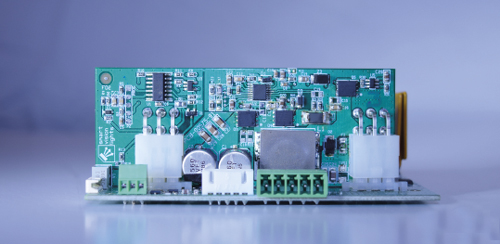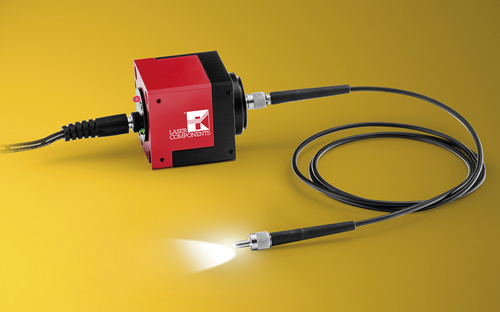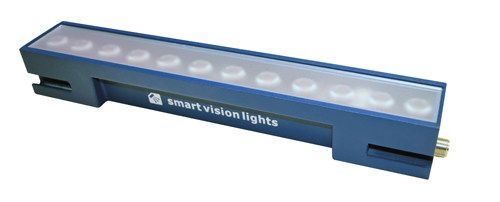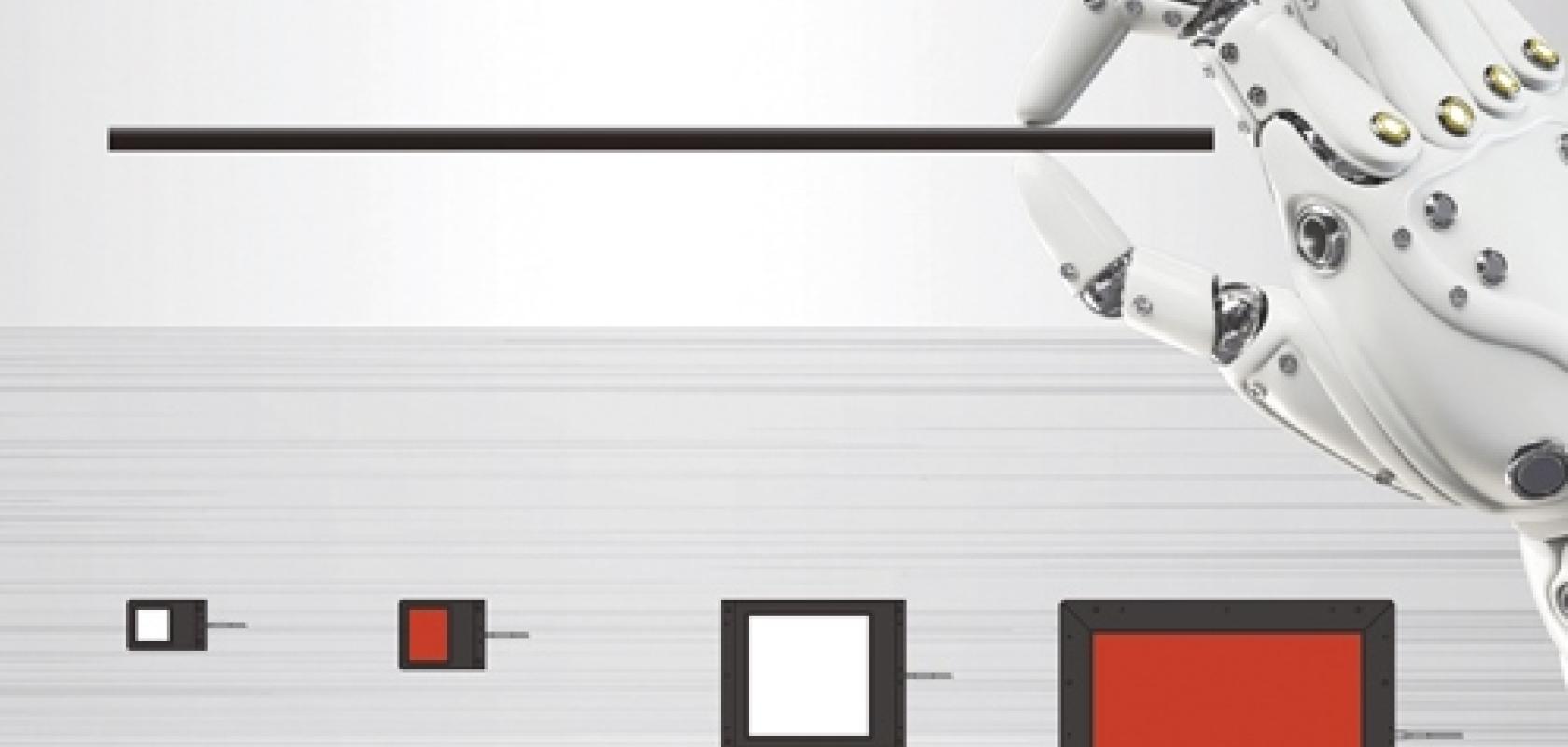Organic Light Emitting Diodes (OLEDs) are finally coming of age for machine vision applications. Although the potential of OLED illumination has been apparent for many years, there have been challenges in bringing them to market. OLEDs for machine vision require smaller volumes and greater variations in form factors, flexibility and customisation than OLEDs manufactured for the semiconductor industry. New innovations and processes have been required to address this. OLED illumination panels offer a number of key features that will open up new opportunities for OEM machine builders and designers, system integrators, and end users. These include: uniform light output; thin, lightweight construction; minimal heat generation; flexible design options; full control of intensity and exposure time, including overdriving and lifetime prediction. OLEDs have the potential to make machine vision lighting useful in industries and applications where it hasn’t been used before, as well opening up new applications.
OLED construction
OLEDs are manufactured from organic material that emits light when a voltage is applied. One of the biggest benefits is that large light-emitting surfaces can be manufactured in housings as thin as 3mm. These very thin assemblies offer space-saving advantages that can have a significant impact on system design. Since the organic molecules are present throughout the panel, they generate light across the entire emitting surface, which produces Lambertian radiation for highly diffuse illumination of an object. The light output achievable depends on the exact construction of the OLED panel, but for example using mutli-layer technology, multiple photons can be generated, leading to increased radiance compared to conventional backlights and other conventional panel lights. Dedicated multi-channel OLED lighting controllers are available to provide precision constant-current output with high stability and high resolution at all currents. This allows OLEDs to be used with full control of pulse width and delay, and safe overdriving to deliver higher light output.
Since they are surface-emitting and so thin, OLEDs also produce comparatively little heat meaning that they do not need additional heat sinking. Heat management is an essential consideration in system design, especially in cases where the inspected items may be sensitive to heat exposure, such as in the pharmaceutical and medical industry. The back of the panels can also be manufactured with heat conduction properties for further heat management, granting users wider configuration possibilities.
Potential applications
OLED panels are currently primarily available as backlights emitting white or red. As the lights are very thin they can fit in narrow spaces and maximise flexibility during installation and operation. This is an important consideration in cases where system integrators want to implement a different light unit after most of a system design has been finalised and space is at a premium, since even the thinnest LED flat light has less uniformity and is much thicker than equivalent OLED panels.
One particular quality of OLED construction is the possibility to customise them into various shapes. This opens up the possibility of designing new lights that do not yet exist in the machine vision industry, such as customised curved light units for inspection systems. OEM machine builders and designers from industries such as medical technology, pharmaceutical, and chemical are already showing strong demand for more compact machine design. In response to the need for space saving, the bespoke design of OLED lighting is the perfect solution and OLED has the potential to influence users’ future new machine design layout up front because of its attributes.
There is also the potential to develop transparent lights thanks to the thinness of OLEDs. These lights could be configured similar to coaxial lights with the same diffuse effect, for new opportunities in system design. The combination of an on-board IC chip containing an individual light’s data with a suitable controller to create an intelligent lighting system has already gained some traction for LED lighting, and the same is possible with OLEDs.
As with LEDs, OLEDs have a finite useful lifetime, and unexpected decreases in lighting levels can disrupt the performance of an inspection system. Equipping an OLED with an IC chip to store the light’s parameters and monitor dynamic usage data can allow predictive maintenance and the remaining lifespan of the OLED to be calculated, ensuring timely replacement.
Gardasoft provides an OLED lighting controller which is compatible with the CCS range of OLED panels
--
Nanosecond strobing
Producing high-quality, high-volume, mass-consumed products requires incredibly fast machine vision inspection times. Cigarette manufacturing lines run at up to 20,000ppm; tetrapack inspection can be 3,600ppm, while verifying codes and inspecting packaging foils operate at 2,000ppm.
The inspection solutions used for these applications must work in unison to reach the performance required. To freeze the image at the precise time, the camera systems need a certain frame rate, the software will need the computing platform to execute commands, and the lighting must trigger and come to full power.

To meet this demand, Smart Vision Lights has developed an internal driver capable of delivering full power to a light in 50 nanoseconds or less, for most cases. High-speed inspection requires fast image acquisition or a short image exposure. Image acquisition needs lighting to be strobed at a rapid rate, providing enough light to freeze an image properly with little to no pixel blur. Lights built using NanoDrive technology are able to reach full intensity in nanoseconds when strobing, allowing for a very short image acquisition time and helping to minimise or remove ambient lighting.
The very short ‘on’ time for lights featuring NanoDrive is comparable to the ‘off’ time of the light, thereby increasing the number of strobes the light can produce per second.
--
Commercial products
Among the latest industrial lighting products is a portfolio of components from Basler, developed in cooperation with CCS.
The lights are designed for Basler Ace U and L cameras equipped with the Basler SLP feature, which gives direct communication between the camera and the light source. This reduces the complexity of a vision system and enables a user to integrate lighting early on, thus shortening the time spent on design and installation.

Also new from Laser Components is the Albalux FM, a laser white light module with bright and directional fibre optic output. The module has been designed for medical endoscopy, surgical headlights, manufacturing processes and 3D machine vision.
A key component of Albalux FM is the LaserLight technology from SLD Laser. Based on GaN semi-polar blue laser diodes, LaserLight generates brilliant white light that is more than 10 times higher in luminance than today’s LEDs, yet with minimal power consumption and long lifetime. To maximise light transmission, optical fibres are incorporated that gives 150 lumen CW output with sharp narrow edges.
Finally, new from Opto Engineering are the LTCLHP Core Plus telecentric illuminators, which are up to 40 per cent shorter than other telecentric lights on the market. Their working distance range has been optimised to make a measurement system as compact as possible.

Smart Vision Lights: Featured product
The NanoDrive™ LED light driver delivers full current, in most applications between 50 and 250ns to provide hundreds of amps and full intensity faster than many cameras operate. While traditional LED lights that take from two to tens of microseconds to fully power on are suitable for conventional imaging applications, these time frames are becoming problematic as the inspection industry adopts higher-speed cameras. A 2019 Prism Award winner, SVL’s NanoDrive significantly expands options for applications that require short image exposure times or rapid image acquisition. NanoDrive is featured in an increasing number of Smart Vision Lights products, including:
The XR256-FIBER Light that, as an LED-powered alternative to Xenon lamps, offers a high-energy strobe output designed to match the performance of a Xenon source.
The SXP80 Projector Light, which provides high-intensity projection of small pattern features over large distances yet maintains the brightness typical of near-field applications.
The LZE300 Linear Light, which allows direct connection of up to six lights, enabling cost-effective arrays that don’t compromise uniformity.

https://smartvisionlights.com


